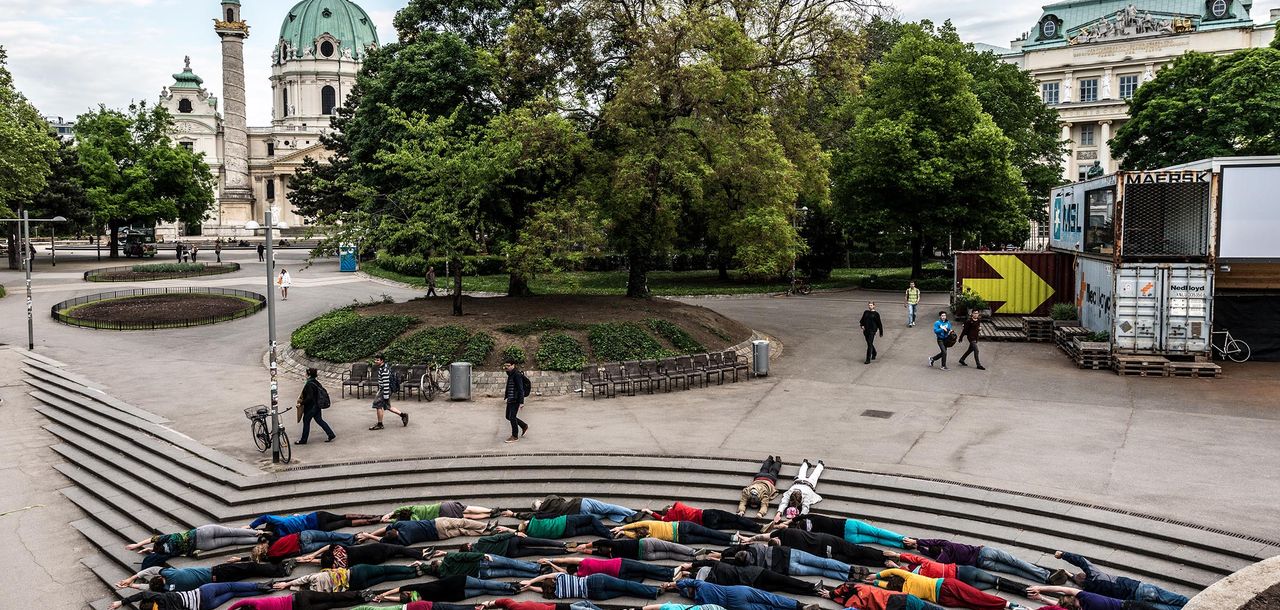A festival in the public space, organized by the University of Applied Arts Vienna
Until now, art in public space has primarily taken place in the medium of sculpture, in forms ranging from the figurative to the abstract. Most of these sculptures were backward-looking: they served to commemorate significant events or personalities. And yet, public art actually represents a great opportunity for a functioning democracy. That which is public in a most literal sense—namely, public space—has become an important medium of democracy alongside the press and parliament. Civic participation in the political sphere parallels the increasing inclusion of the viewer as a participant in the visual arts since the performative turn of the 1960s. With the introduction of real-time activity into art through actions, happenings, Fluxus, etc., a transition has occurred from space-based art (like sculpture) to time-based art. Performance has conquered public space, and thus it has put the classic notion of sculpture in public space up for discussion. Sculpture becomes not only site-specific, but also a performative object that is only completed by the public’s participation and through its interaction with an active recipient. The practice of sculpture can become the vehicle of a public intervention, potentially serving not only as a critique of the present, but also as the design for a utopia. Within the framework of worldwide activism, many artists have brought forth new forms of performative sculpture, new forms of “public art.”
Today public art aims to create an event in public space. It aims to replace the silent sculpture with a new language of awareness. This new language arises from actions, interactions, and events. Unnoticed by the gallery and museum system, artists have produced a new form of public art. It has become one of the most important fields of practice in contemporary art at a moment in history where painting and sculpture are increasingly becoming market art, thus withdrawing from the public—that is, from a democratically active public.
An archive exhibition at the Angewandte Innovation Laboratory (AIL) on Franz-Josefs-Kai will document the performance festival and serve as a festival center for artists and the public.
Festival dates
11 June – 5 July 2015
Accompanying exhibition at the AIL
11 June – 31 July 2015
Curator
Peter Weibel, Executive Director, ZKM | Center for Art and Media in Karlsruhe; Professor (emer.), University of Applied Arts Vienna and Gerald Bast, President, University of Applied Arts Vienna
